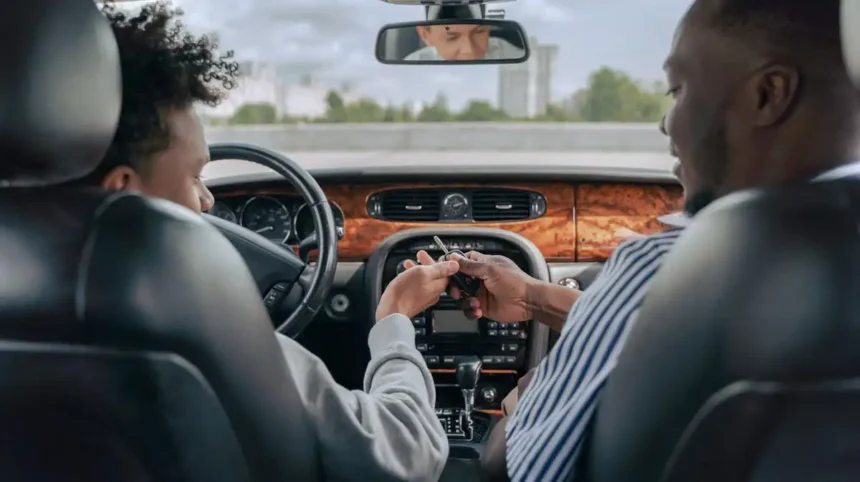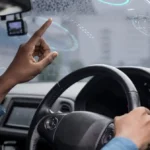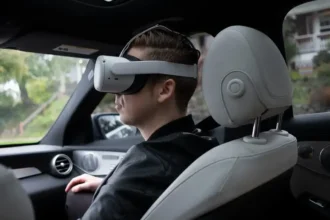Have you ever wondered how the way we get around will change in the next decade? What if you didn’t need to own a car, and all your transportation needs were met through a seamless app that connects you with shared vehicles and ride-hailing services? In a rapidly evolving world, car sharing and ride-hailing tech are not just buzzwords—they’re reshaping the future of urban mobility.
In this article, we’ll explore the future of car sharing and ride-hailing technologies, how they’re impacting the way we move, and what exciting innovations are just around the corner. The goal is to help you understand how these developments are revolutionizing transportation and what it means for the future, especially in the USA.
Rise of Car Sharing and Ride-Hailing: Why Now?
In recent years, both car sharing and ride-hailing have surged in popularity, and there are several reasons for this shift.
First, more people are choosing to live in urban environments, where owning a personal vehicle can be both a hassle and a significant expense. Parking fees, insurance, fuel costs, and maintenance all add up. Ride-hailing services like Uber and Lyft provide the convenience of on-demand transportation without the burdens of ownership. Meanwhile, car-sharing platforms such as Zipcar and Turo offer flexible access to vehicles without the long-term commitment.
How Car Sharing Technology is Evolving?

Car sharing has evolved from basic hourly rental models to more sophisticated systems powered by cutting-edge technology. The future of car sharing lies in automation, connectivity, and sustainability.
- Autonomous Cars and Car Sharing: Autonomous vehicles (self-driving cars) are set to transform car sharing. Imagine hailing a shared car that drives itself to your location, picks you up, and then parks itself once your journey is over. This eliminates the need for a human driver, reducing labor costs and making car sharing more affordable.
- Electric Vehicles (EVs) in Car Sharing: As concerns about climate change grow, electric vehicles are becoming a key component of car-sharing services. Companies like Zipcar and Turo are already incorporating EVs into their fleets to provide a cleaner, greener transportation option.
- Smartphone Integration and IoT: In the future, smartphone apps will play an even bigger role in car sharing. With the help of the Internet of Things (IoT), car-sharing apps can sync with smart city infrastructure, such as traffic lights, parking systems, and even charging stations for electric vehicles.
Ride-Hailing Tech: What’s on the Horizon?
Ride-hailing has grown exponentially over the past decade, but the next wave of innovation is already on the way. The future of ride-hailing goes beyond just matching drivers with passengers. We’re entering a world where ride-hailing services will be smarter, faster, and more personalized.
- AI-Powered Ride Matching: Artificial intelligence (AI) will play a critical role in optimizing ride-hailing services. By analyzing traffic patterns, weather conditions, and even personal preferences, AI can provide passengers with quicker routes, lower wait times, and a more tailored experience. For example, Uber has already implemented an AI-based system to determine the best routes and match passengers who are headed in the same direction.
- Autonomous Ride-Hailing: Similar to car sharing, autonomous vehicles are expected to revolutionize ride-hailing. Companies like Uber and Lyft are already testing self-driving cars as part of their fleets. Once fully autonomous ride-hailing becomes mainstream, it will drastically reduce the cost of rides, as there will be no need to pay drivers.
- Multi-Modal Transportation Integration: In the future, ride-hailing apps will likely integrate multiple forms of transportation into a single, cohesive experience. This concept, known as multi-modal transportation, would allow users to plan a trip that combines ride-hailing with other modes of transit, such as bikes, buses, or even trains. For example, Uber is already experimenting with bike-sharing and public transportation integration in certain cities.
Benefits of Car Sharing and Ride-Hailing Technologies
Both car sharing and ride-hailing technologies offer significant benefits to individuals, cities, and the environment. Here are some of the key advantages:
1. Cost Savings for Individuals
- Car Sharing: Users only pay for the time they use the vehicle, which can lead to substantial savings compared to owning a car.
- Ride-Hailing: On-demand rides eliminate the need for vehicle maintenance, insurance, and fuel costs, making it an affordable option for those who don’t drive frequently.
2. Reduced Traffic Congestion
- Fewer privately owned cars on the road means less congestion, especially during rush hours. Car sharing and ride-hailing services reduce the need for parking, further decreasing urban traffic issues.
3. Environmental Sustainability
- The rise of electric vehicles in car-sharing fleets will contribute to lower emissions, helping cities meet climate goals. Autonomous vehicles, once implemented, are expected to be more fuel-efficient due to optimized driving patterns.
4. Increased Accessibility
- Ride-hailing services provide mobility solutions for those who don’t own cars, particularly in underserved areas or for people with disabilities.
Challenges Facing the Future of Car Sharing and Ride-Hailing
As promising as the future of these technologies looks, they face several challenges that must be addressed before they can reach their full potential.
1. Regulation and Policy
Governments will need to establish clear policies regarding the operation of autonomous vehicles, data privacy, and safety standards. Both car-sharing and ride-hailing companies must work closely with regulators to ensure their services comply with local laws.
2. Infrastructure Requirements
A shift towards electric and autonomous vehicles will require substantial upgrades to urban infrastructure, such as more charging stations and improved road conditions. Cities will need to invest in these areas to support the growth of car-sharing and ride-hailing services.
3. Cybersecurity Risks
As more vehicles become connected through the IoT, the risk of cyberattacks increases. Both car-sharing and ride-hailing platforms will need to invest in robust cybersecurity measures to protect user data and prevent potential hacks.
Future of Mobility: A New Era of Shared Transportation
As we look ahead, it’s clear that the future of mobility is shifting towards shared, sustainable, and technologically advanced systems. Car sharing and ride-hailing are just the beginning. Autonomous vehicles, electric fleets, and AI-driven transportation systems will soon dominate our cities, offering a more efficient and eco-friendly alternative to private car ownership.
Conclusion
Car sharing and ride-hailing technologies are more than just a trend—they are shaping the future of transportation in the USA. As urban populations grow and environmental concerns rise, these innovations offer viable solutions to some of our most pressing transportation challenges. From AI-powered ride matching to electric and autonomous fleets, the future of car sharing and ride-hailing is full of promise, providing safer, more efficient, and more affordable ways to get around.
As we continue to embrace these changes, we can look forward to a world where mobility is more flexible, accessible, and sustainable than ever before.








